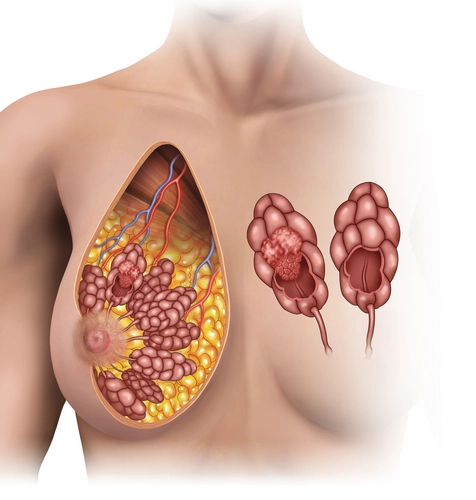General Surgery Coding Alert
Navigate Surgery Bundles That Could Compromise Your Pay
Modifier indicator is key.
Like most first-quarter Correct Coding Initiative (CCI) updates, version 25.0 focuses on bundling new CPT® codes that went into effect Jan. 1.
With almost 46,000 new edit pairs, your practice should focus on the nearly 2,500 CCI additions to the integumentary section, which boasts the majority of CPT® 2019 codes that impact general surgery practices.
Let our experts impart some significant CCI know-how to ensure you’re billing correctly — beginning now — because “it is important to review the edits and apply them as soon as possible,” advises Arnold Beresh, DPM, CPC, CSFAC, in West Bloomfield, Michigan.
Focus on These FNA Edits
You’ve got a lot of edits to learn regarding new fine needle aspiration (FNA) codes +10004 (Fine needle aspiration biopsy, without imaging guidance; each additional lesion (List separately in addition to code for primary procedure) through +10008 (…, including fluoroscopic guidance; each additional lesion (List separately in addition to code for primary procedure)).
Restrict unbundling: CCI 25.0 creates edit pairs with a modifier indicator of “0” that bundle new codes +10004-+10008 with the following codes: 36591 (Collection of blood specimen from a completely implantable venous access device), 36592 (Collection of blood specimen using established central or peripheral catheter, venous, not otherwise specified), and 96523 (Irrigation of implanted venous access device for drug delivery systems). The “0” modifier indicator means that you cannot override these edits under any circumstances.
Modifier indicator “1”: You’ll also find multiple codes bundled into add-on FNA codes +10004 and +10006 that carry a modifier indicator of “1,” such as the following:
- 10035 (Placement of soft tissue localization device(s) (eg, clip, metallic pellet, wire/needle, radioactive seeds), percutaneous, including imaging guidance; first lesion)
- 36000 (Introduction of needle or intracatheter, vein)
- 61650 (Endovascular intracranial prolonged administration of pharmacologic agent(s) other than for thrombolysis, arterial, including catheter placement, diagnostic angiography, and imaging guidance; initial vascular territory).
CCI 25.0 also creates edit pairs with a modifier indicator of “1” for several services bundled with new, primary FNA codes 10005, 10007, and +10008, such as the following:
- 10021 (Fine needle aspiration, without imaging guidance; first lesion)
- 19281 (Placement of breast localization device(s) (eg, clip, metallic pellet, wire/needle, radioactive seeds), percutaneous; first lesion, including mammographic guidance)
- 76000 (Fluoroscopy (separate procedure), up to 1 hour physician or other qualified health care professional time).
Possibly unbundle: When the modifier indicator is “1,” you may be able to report both codes of an edit pair under certain, well documented circumstances. According to CMS, “Documentation must support a different session, different procedure or surgery, different site or organ system, separate incision/excision, separate lesion, or separate injury (or area of injury in extensive injuries) not ordinarily encountered or performed on the same day by the same individual.”
To override the edit pair and report both codes, when appropriate, you should use a modifier such as 59 (Distinct procedural service), according to Mary I. Falbo, MBA, CPC, president and CEO of Millennium Healthcare Consulting Inc. in Lansdale, Pennsylvania.
Tip: Depending on your payer policies, you may want to consider the use of the X{EPSU} modifier set in place of modifier 59. Modifier XS (Separate structure), for instance, specifically designates services performed at different anatomic sites on the same day.
Ponder New Skin Biopsy Edits
Make sure you don’t miss the edits surrounding these new, CPT® 2019 skin biopsy codes:
- 11102 (Tangential biopsy of skin (eg, shave, scoop, saucerize, curette); single lesion) and +11103 (… each separate/additional lesion (List separately in addition to code for primary procedure))
- 11104 (Punch biopsy of skin (including simple closure, when performed); single lesion) and +11105 (… each separate/additional lesion (List separately in addition to code for primary procedure))
- 11106 (Incisional biopsy of skin (eg, wedge) (including simple closure, when performed); single lesion) and +11107 (… each separate/additional lesion (List separately in addition to code for primary procedure)).
For example, some of the many edits you’ll find for the new biopsy codes that have a modifier indicator of “0” are:
- 64410 (Injection, anesthetic agent; phrenic nerve)
- Moderate sedation codes 99155-+99157.
Don’t forget to check out the edits surrounding 11102-+11107 that have a modifier indicator of “1.” For example, a small sample of these edits includes the following:
- Debridement codes 11042-+11047
- Repair codes 12044-12047
- Evaluation and management codes 99211-99223.
Limit New PICC Code
CCI 25.0 creates hundreds of edit pairs with new CPT® 2019 codes 36572 (Insertion of peripherally inserted central venous catheter (PICC), without subcutaneous port or pump, including all imaging guidance, image documentation, and all associated radiological supervision and interpretation required to perform the insertion; younger than 5 years of age) and 36573 (…age 5 years or older).
CMS bundles 36572 and 36573 as column 2 codes with most other central and peripheral venous access codes in the range 36555-36571 and 36582-36585. These edit pairs mostly have a modifier indicator of “1.”
You’ll also find 36572 and 36573 as column 1 codes for almost all integumentary codes and many cardiovascular codes, also with a “1” modifier indicator.
Restricted: For new 36572 and 36573 edit pairs matched by patient age with ECMO codes 33951-33956 (Extracorporeal membrane oxygenation (ECMO)/extracorporeal life support (ECLS) provided by physician;…), you’ll see a modifier-indicator of “0,” so you should never override these bundles.
Skim Through Edits With 99451 and 99452
The majority of edits from this round of CCI changes involve the following two new codes for 2019:
- 99451 (Interprofessional telephone/Internet/electronic health record assessment and management service provided by a consultative physician, including a written report to the patient’s treating/requesting physician or other qualified health care professional, 5 minutes or more of medical consultative time)
- 99452 (Interprofessional telephone/Internet/electronic health record referral service(s) provided by a treating/requesting physician or other qualified health care professional, 30 minutes).
CCI always lists codes 99451 and 99452 as the column 2 code of each edit pair, meaning that these new codes are components of the bundled service. In other words, you should report only the primary code, which includes any interprofessional communication that you would otherwise report with 99451 or 99452.
Important: Every edit pair that includes 99451 or 99452 has a modifier indicator of “0,” so you cannot ever unbundle the pair.
Related Articles
General Surgery Coding Alert
- CCI Edits:
Navigate Surgery Bundles That Could Compromise Your Pay
Modifier indicator is key. Like most first-quarter Correct Coding Initiative (CCI) updates, version 25.0 focuses [...] - ICD-10 Changes:
Master Guidelines for Infection, Sepsis
Neglect sequencing rules at your peril. Each year, we rush to learn “new codes, new [...] - HIPAA Compliance:
Protect Patients With New HHS Cybersecurity Guidance
Learn best practices for your needs. Along with electronic health records (EHR) and other information [...] - You Be the Coder:
Axillary Lymphadenectomy is Total
Question: The listed procedure on the op note is “partial mastectomy,” but the surgeon’s narrative includes [...] - Reader Question:
Spotlight CF: 1 Factor for Medicare Fees
Question: What is the “conversion factor,” and how does it impact Medicare payment? Nebraska Subscriber [...] - Reader Question:
Look for Separate Appendectomy
Question: While performing an open gallbladder removal, the surgeon noted localized peritonitis associated with acute [...] - Reader Question:
Prepare for LCD Changes
Question: I heard that Medicare is changing LCDs to eliminate ICD-10 codes. Does that mean we [...]




